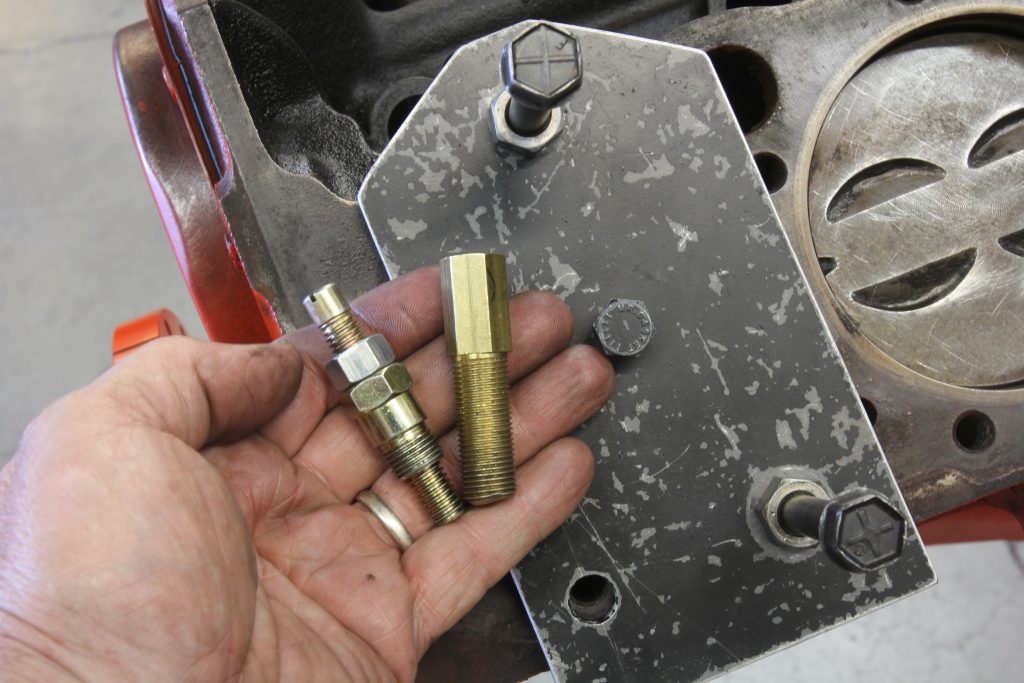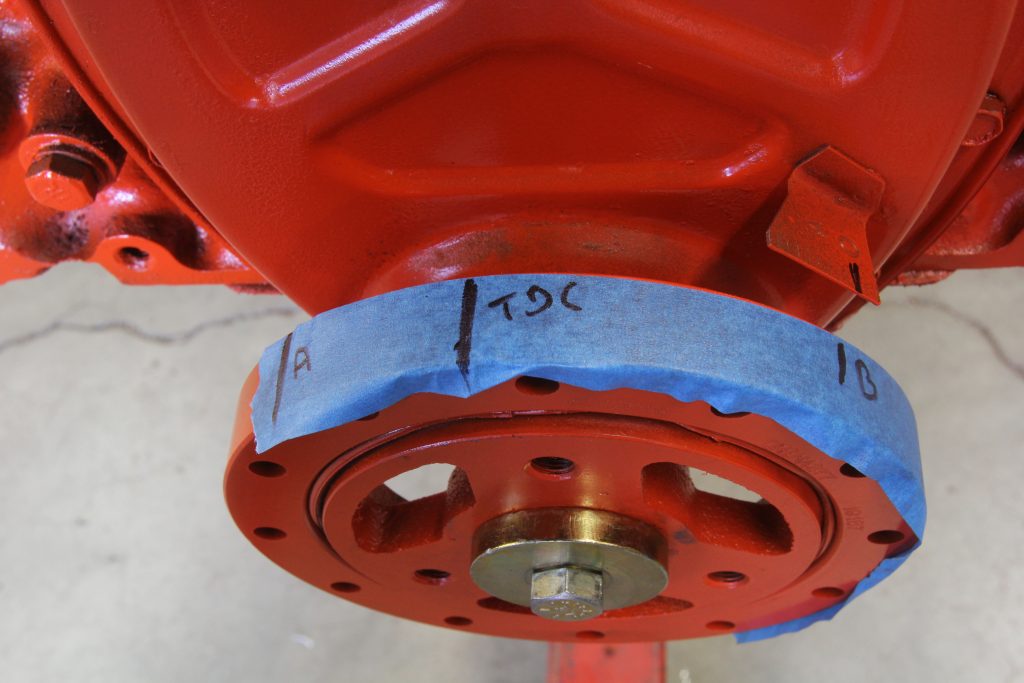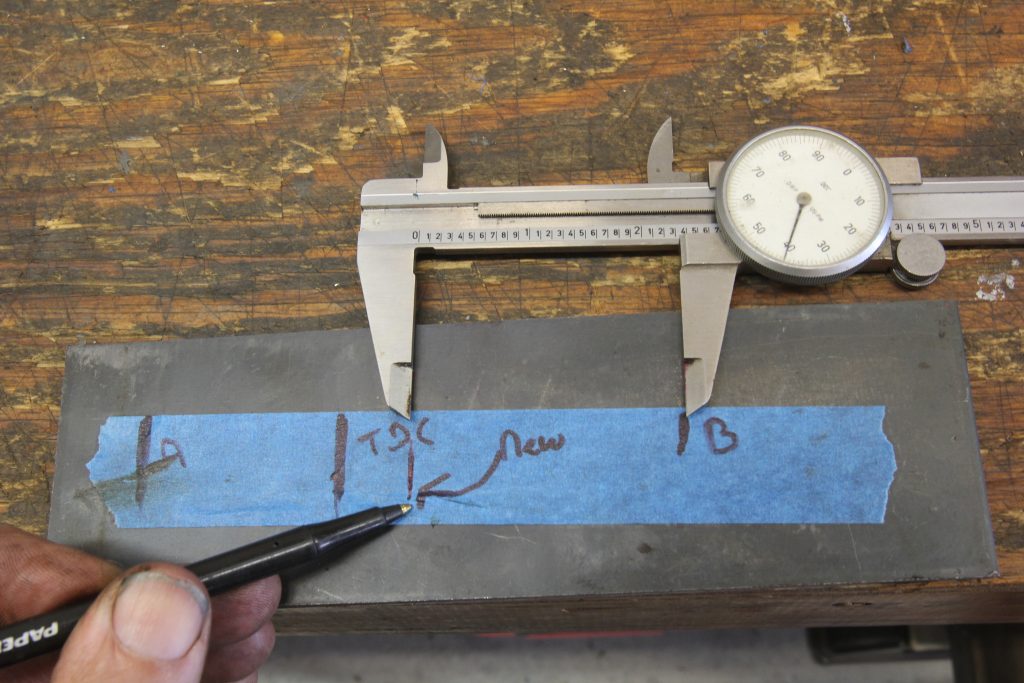I installed my new camshaft and also bought a new harmonic balancer for my 355ci small block Chevy. I installed the front cover and then bolted on my harmonic balancer and I also bought a new timing pointer.
I brought the engine up to what I think is pretty close to top dead center on cylinder number one but the timing mark on the harmonic balancer is not lined up with the TDC mark on the tab. It seems to be way off. Did I somehow not get the dots aligned when I installed the cam? I’m curious about what went wrong.
L.T.
First, let’s address you question about possibly not aligning the timing marks on the cam timing gears when you swapped camshafts. The proper position of the camshaft relative to the crankshaft is why you align the marks. Ideally, you should have degreed the camshaft to ensure the cam was installed properly, but frankly most folks don’t and 90 percent of the time if the marks line up, you will be within a degree or so of where the camshaft should be positioned..
But this has nothing to do with the relationship of the harmonic balancer reference to top dead center (TDC) of Number One piston. These two systems are separate so, even if you misalign the cam, this will have no effect on the TDC marks on the balancer. However, the TDC marks must be properly positioned in order to set and measure proper ignition timing.
That’s what we’ll get into here.
Chevrolet used at least three different TDC marks on the harmonic balancer for the small block Chevy over the course of the engine’s long life span. The earliest versions aligned the TDC mark with the woodruff key in the balancer hub. In 1969, Chevy moved the location roughly retarded 12 degrees. Then in the 1980s some engines moved the timing mark to the straight up or 12 o’clock position on the balancer.
Not only that, but there were different diameters of balancers as well so it can get confusing. We won’t get into the all details of all these different balancers for the sake of brevity. What we can tell you is how to establish a proper TDC reference mark either on the balancer or by using different bolt-on timing pointers. The combination of the two points can establish the accurate TDC location for your engine.
The most common balancer used on small block Chevys is the eight inch diameter version. Regardless of whether you buy a stock version or one with degree marks etched or milled into the balancer, you will still need to check for TDC accuracy combined with a pointer or timing tab.
How to (Really) Check for Top Dead Center
Assuming you have a balancer and a timing tab bolted to the engine, this does not guarantee that the TDC position is accurate. So let’s run through the procedure to verify the position. First you will need some minor tools. If the heads are off the engine, you can make a flat plate with a couple of bolt holes and a center bolt to act as a piston stop or you can purchase one from Summit Racing’s piston stop tool selection. If the heads are on the engine, there are piston stops that thread into the cylinder in the spark plug hole.
If the heads are on, it’s best to remove all the spark plugs since that will allow you to easily turn the engine over by hand. Don’t try to use the starter motor as this could cause engine damage. Always turn the engine over by hand.
Next, take roughly a 12 inch length of masking tape and lay it over the balancer roughly split around the existing zero timing mark on the balancer. Back the Number One piston away from TDC and install the piston stop. Next slowly rotate the engine clockwise until the piston hits the stop. Mark the stop position equal to the zero position on the timing tab onto the masking tape.
Next, turn the engine counterclockwise until the piston contacts the piston stop and again mark the corresponding TDC position on the masking tape. Now remove the piston stop and measure the distance between the two marks. The halfway position of the two marks will be true TDC on the balancer.

If you have a balancer with timing marks machined in place, it’s best to use an adjustable timing pointer that can be easily moved to correspond with your engine’s actual TDC position. If the timing is off and you are using a stock balancer, it might be best to make a new permanent mark on the balancer with a hack saw blade and mark it with a white stripe to make it easily identifiable with a timing light. Another option is to buy an adhesive timing tape to place on the balance to correspond to the true TDC mark. MSD makes a nice tape for this purpose with multiple lengths based on the diameter of the balancer.
This whole procedure will not take long to perform and it can be accomplished even with the engine in the car. If you have any doubts about parts that you’ve added concerning where TDC is, this is a great way to alleviate your fears. The result is far more accurate ignition timing.


Finding TDC Parts List
- Summit Racing piston stop, heads removed – SUM-900191
- Summit Racing piston stop, spark plug style, heads on – SUM-900189
- Summit Racing bolt-on timing tab, 8” balancer – SUM-G3205
- Summit Racing adjustable timing pointer – SUM-163800
- MSD timing tape – MSD-8985

Comments